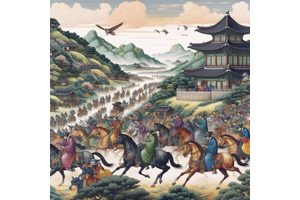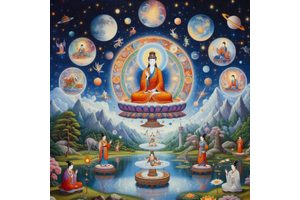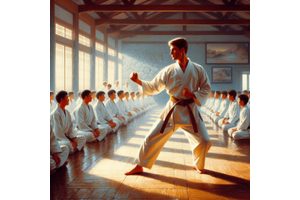The Hidden Symbolism
How Chon-Ji Reveals the Secrets of the Universe
Chon-Ji, the first Taekwondo pattern, isn’t just a form—it’s a story. A story that reveals the secrets of the universe, the martial art, and ourselves. In this blog post, we’ll uncover the hidden symbolism behind Chon-Ji’s name, movements, and meaning, and how they can enrich our Taekwondo journey.
1. Chon-Ji: The Universal Blueprint
Chon-Ji’s name translates to “Heaven” and “Earth”. It signifies the creation of the world or the dawn of human history. It also represents the balance we seek in both martial arts and life.
Chon-Ji mirrors the Universal genesis, inviting us to participate in the dance of existence. It’s a blueprint for all subsequent patterns, as well as our own reality.
2. Heaven and Earth: The Yin-Yang Harmony
Chon-Ji’s name embodies the yin-yang harmony—the balance of opposites that governs the universe and ourselves. Let’s explore the meaning of each element:
- Heaven (Chon): Symbolises the sky, the cosmos, and the divine. It embodies aspiration, growth, and the unattainable.
- Earth (Ji): Symbolises the ground, our roots, and the tangible. It embodies stability, grounding, and the attainable.
Together, heaven and earth form a dynamic equilibrium—the balance we seek in life and combat. Just as heaven and earth coexist, so do our aspirations and grounded reality.
3. The 19 Movements: A Symphony of Stillness
Chon-Ji’s 19 movements are like musical notes suspended in time. Each movement resonates with purpose and precision. Let’s explore a few key ones:
- Ready Stance (Joon-Bi): We breathe, feel the energy and focus.
- Outer Forearm Low Block (Bakat Palmok Najunde Makgi): We deflect an opponent’s force, channelling our inner mountain.
- Forefist Middle Punch (Ap Joomuk Kaunde Jirugi): We extend our arm, aiming for precision and speed.
- Inner Forearm Middle Block (An Palmok Kaunde Makgi): We protect our chest, bending and rising like bamboo.
4. Heavenly Lake
Chon-Ji is also the name of a heavenly lake, located in a crater on Paektu Mountain, an extinct volcano on the border between China and North Korea.
Paektu Mountain is said to have been the first residence of the legendary founder of Korea, Dan-Gun, who established his capital at Asadal (now Pyongyang) in 2333 B.C.E2 The lake is also known as Heaven Lake or Tianchi, and it is the highest volcanic lake in the world.
The lake is divided between the two countries, and it is a sacred site for both Koreans and Manchus.
5. The Cross Shape: The Four Directions
Chon-Ji’s movements form a cross shape on the floor. This shape symbolises the four directions: north, south, east, and west. The four directions represent the four elements: earth, water, fire, and air. The four elements represent the four aspects of ourselves: body, emotion, mind, and spirit.
Chon-Ji teaches us to balance the four directions, the four elements, and the four aspects of ourselves. It teaches us to integrate our physical, emotional, mental, and spiritual dimensions, and to align them with the natural forces of the universe.
Conclusion: The Universal Dance
Chon-Ji isn’t just a form—it’s a meditation. In its stillness, we find movement. In its simplicity, we discover complexity. In its symmetry, we recognize beauty.
Chon-Ji teaches us to breathe, to flow, to balance. It teaches us to be precise, resilient, and adaptable. It teaches us to honour both our aspirations (heaven) and our grounded reality (earth).
As we lower our hands, bow, and step away, we carry the echoes of this symphony within us. We can apply its principles to our daily lives, to our work, relationships, and self-care. We can let Chon-Ji guide our steps, wherever they may lead.
So, my fellow practitioners, next time you practise Chon-Ji, remember its meaning and significance. Feel the harmony of heaven and earth. And may your Taekwondo journey be as timeless as the stars.
Keep practising, keep seeking balance, and let Chon-Ji guide your steps.






